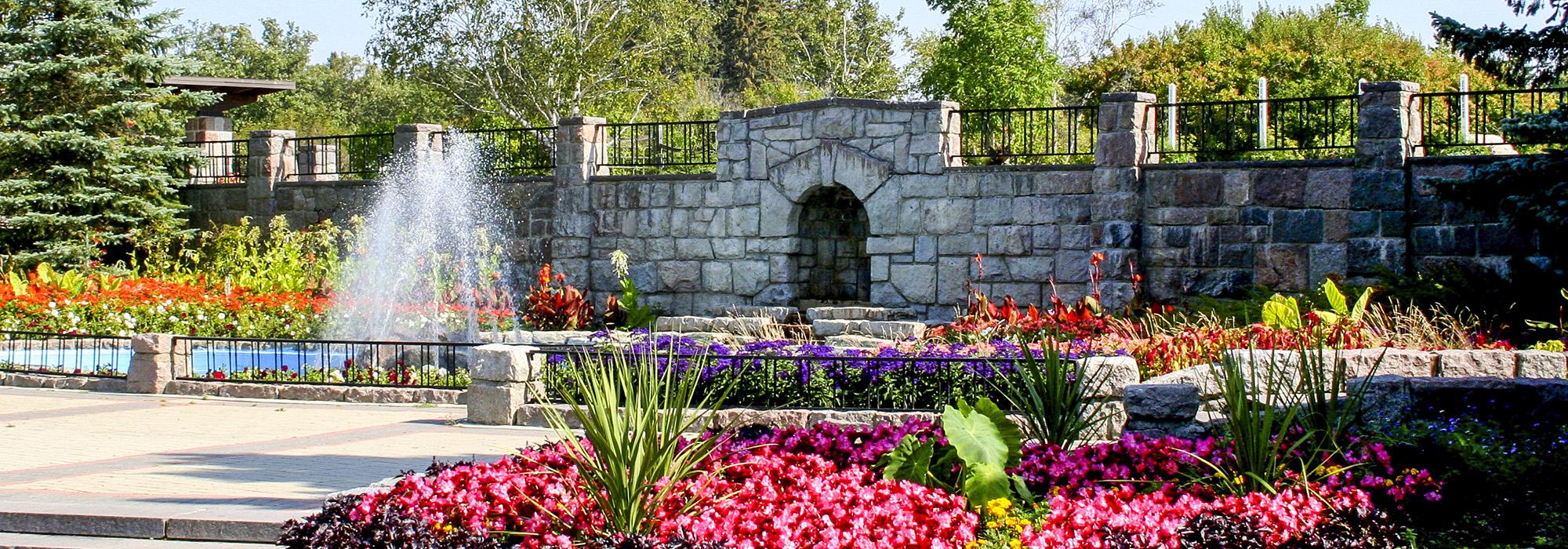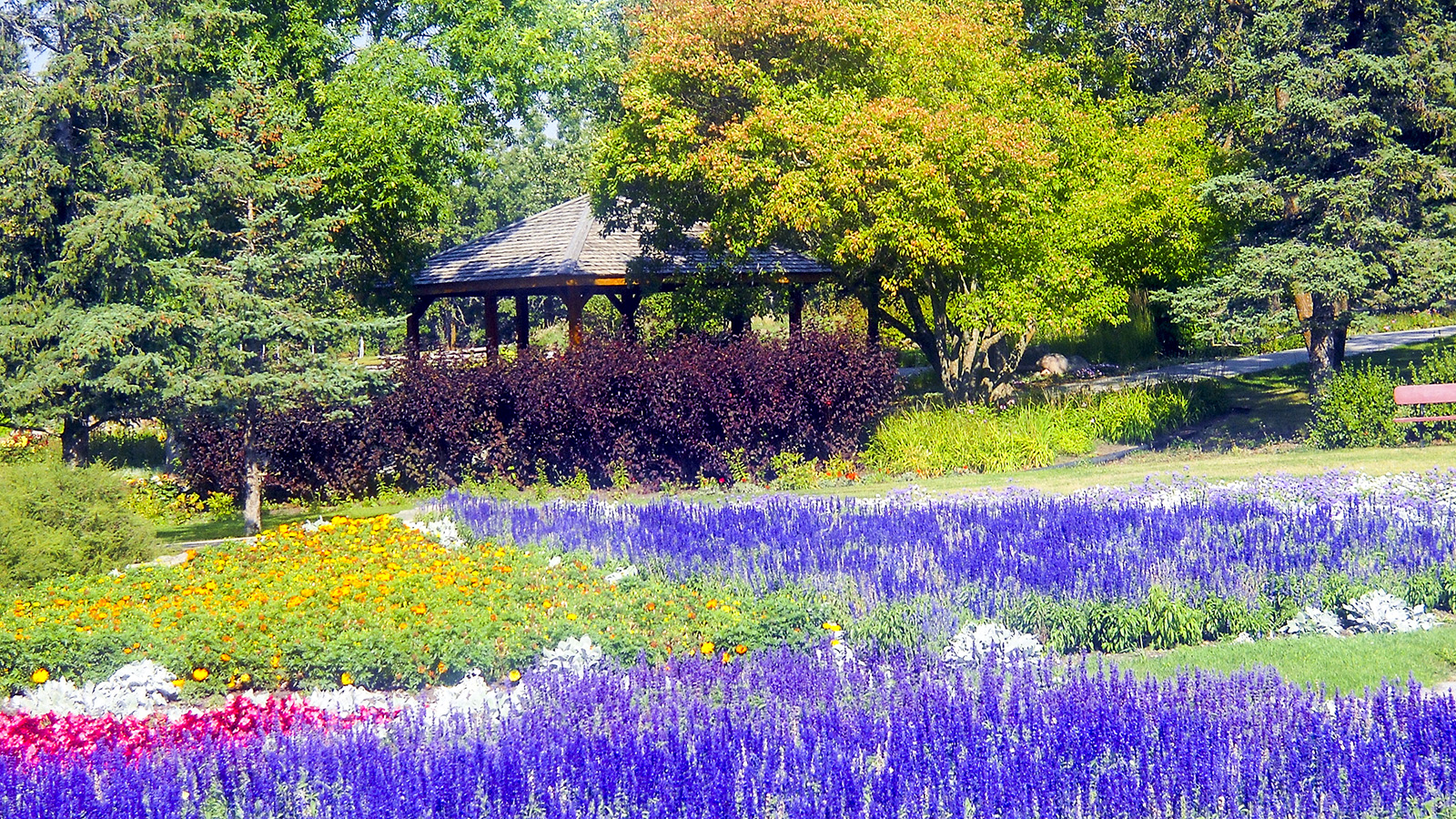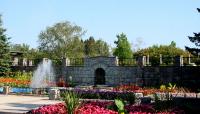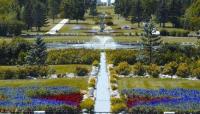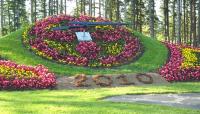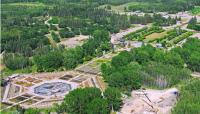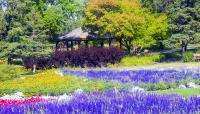Landscape Information
Straddling the U.S.-Canadian border amidst the Turtle Mountains, the International Peace Garden sits at the geographic center of the North American continent. The concept for the garden was first put forward in 1928 by Dr. Henry Moore, a Canadian horticulturalist affiliated with London’s Kew Gardens. Moore conceived of the gardens as a memorial to peace and a symbol of friendship between the two nations. A board comprised of U.S. and Canadian representatives was formed to oversee the project, and the site was formally dedicated on July 14, 1932.The garden’s 2,339 acres include 888 acres in North Dakota and 1451 acres in Manitoba.
In 1933, Minneapolis-based landscape architect Hugh Vincent Feehan designed a master plan for the formal gardens. His original Beaux-Arts plan contained an east-west primary axis and north-south secondary axis with symmetrical parterres. A tower was proposed for the end of the primary allée. From 1934-1941, the U.S. Civilian Conservation Corps developed the site and created the crescent-shaped Lake Udall, with the larger Lake Stormon built on the Canada side. Lack of funding prohibited Feehan’s plans from being fully realized, while a 1966 master plan continues to inform garden additions that include the establishment of an arboretum, new planting beds, an 18-foot wide floral clock, and several memorials.



